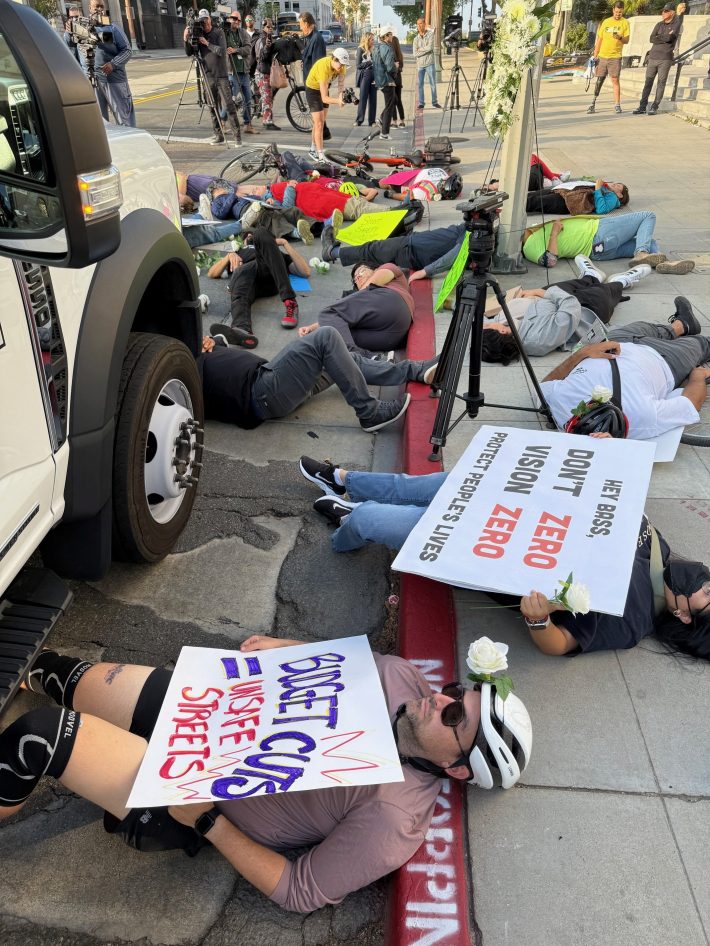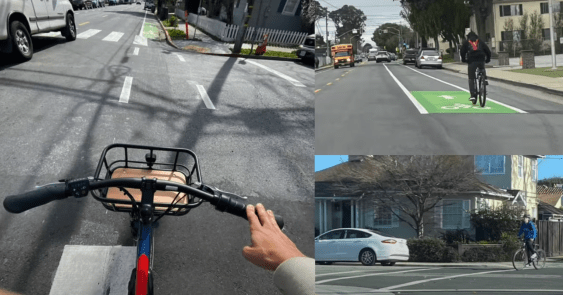California is deep in its budget season. In the coming days, Governor Gavin Newsom must unveil a May revision that balances the budget for the next fiscal year which starts on July 1.
The new budget will likely disappoint many people that are looking to California for leadership on progressive issues. The state’s budget crunch will force leaders to make difficult and likely unpopular choices.
This gives our elected leaders a chance to move beyond rhetoric and show us what their values are. Recent history has shown us that it is a lot easier to fund programs such as active transportation and high-speed rail when the budget is flush (think 2021 or 2022) than when it is constrained (think 2023 or last year). And this year the budget will be constrained.
The Governor first proposed a $322 billion budget that was technically balanced. Newsom said the same thing last year and the budget was balanced with loans and a draw from the state's reserves. The budget forecast for California has only gotten bleaker since then with the costs to rebuild from the wildfires rising, a nationwide recession on the horizon, decreased activity at the ports resulting from the president's trade wars, and a ballooning bill from Medical.
California Can Talk the Talk
For years, going back to Governor Schwarzenegger almost two decades ago, the state’s political leaders have told us that fighting Global Warming and Climate Change is a core value. Against this bleak financial backdrop, they now have a chance to show us if this is a true value for them or not.
The state’s Climate Action Plan, released in November of 2022, sets bold goals. According to a media release the plan will create 4 million new jobs, slash greenhouse gas emissions by 85%, and cut oil usage by 94%.
The state is not on target to reach those goals, and much of the future cuts to emissions and oil usage were expected to come from the growth of the electric vehicle market. With a presidency hostile to the value of electric vehicle subsidies or public investment in necessities such as charging stations, it’s going to be harder than expected for e-cars and e-trucks to get the state to the finish line.
Things Have Changed Rapidly Since Trump Took Office
In the wake of President Trump’s inauguration earlier this year, a coalition of over sixty environmental organizations wrote to the legislature and Governor Newsom with seven ways the state could “Trump Proof” its environmental goals. You can read the specifics in this article, but here’s a brief summary: spend more money on transit and active transportation and less on highway expansion.
In the Bay Area, four transit agencies are facing a “fiscal cliff” with projected operating deficits ranging from 12% to 36% in 2026. State Senators Scott Wiener and Jesse Arreguín are trying both to insert $2 billion into the state budget to cover transit agency deficits throughout the state in the short-term and are seeking authorization for a multi-county sales tax ballot measure to balance the books for counties throughout the Bay.

While cities across the state are facing budget crises, perhaps no city is in need of state aid more than Los Angeles. The budget proposed by Mayor Karen Bass has so many cuts to its transportation, recreation and parks, and street services that the head of the Transportation Department (LADOT) warned that the proposed budget would eliminate any road safety program in the next fiscal year.
On the eve of bike month, safety advocates staged a “die-in” at Los Angeles City Hall to mourn the over 300 people that died on Los Angeles’ streets last year.
"If we don't get a budget that is reflective of the values of pedestrians and cyclists, then we will shut the city down," promised L.A. Walks board chair Jose Richard Aviles.
And of course, those are just some of the most high-profile needs. San Diego has been upfront that they expect declining road conditions if their currently proposed budget is passed. Sacramento is so desperate they’re considering raising car parking fees.
And while cities could need bailouts, Trump has also made it clear that there is no help coming for California High-Speed Rail. The state currently pulls billions of dollars annually from its Cap-and-Trade program. That probably won’t be enough for the project to meet its current goals.
Crisis Creates Opportunity
This year’s budget season is going to be marked by a series of hard choices. But it’ll also be a chance for California’s political leaders to show us their values. Survey after survey shows that Californians value fighting climate change. In the next couple of months we’ll find out if our state legislators and the Governor do as well. Here's hoping for the Climate those values align with ours.






